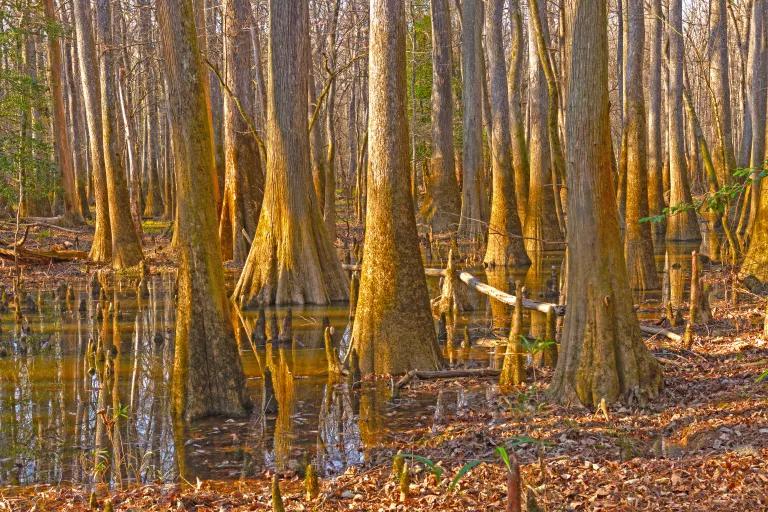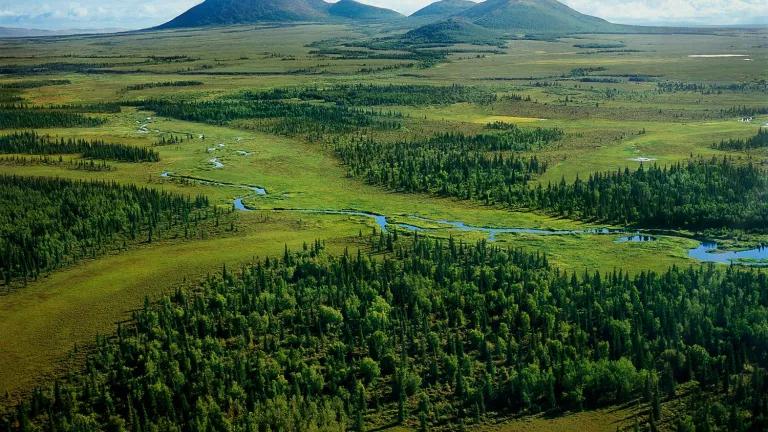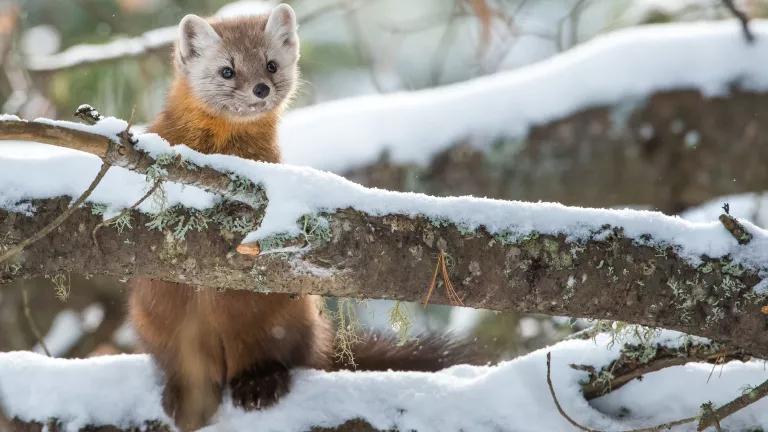Our Climate Future Is Rooted in North America’s Forests
The Biden administration needs to embrace a bold new vision for forest protection that looks at how we can protect the climate-critical forest resources in our own backyard.

Boreal forest
Forest protection, once the “forgotten” climate solution, has become an integral pillar of climate discussions. But while attention has largely focused on forests like those of the Amazon and Indonesia, the climate doesn’t hinge just on what happens in the tropics. It also depends on the boreal; the temperate rainforests of the Pacific; the conifer forests of the Rockies; the Northeastern coastal forests; the Southern wetland forests. These forests in North America are being lost or stripped of carbon rich mature trees right under our noses and need to remain standing and intact if we are going to achieve a climate-safe, sustainable future. As the Biden administration looks to act on its historic commitment to reducing U.S. greenhouse gas emissions by at least 50% by 2030, it needs to embrace a bold new vision for forest protection that looks at how we can protect the climate-critical forest resources in our own backyard.
North America’s forests, the homelands of Indigenous communities and havens of rich biodiversity, are some of the most carbon-dense areas on Earth. These forests are part of the global forest respiratory system that, each year, absorbs one-third of human-caused greenhouse gas emissions. They are also gatekeepers of vast stores of carbon locked safely out of the atmosphere in their soils and biomass. The Canadian boreal forest alone stores twice as much carbon as the world’s oil reserves, while U.S. forests collectively absorb the equivalent of about 12 percent of the nation’s annual carbon pollution. Their sentry stands between us and climate catastrophe.
Mature, old-growth, and intact forests and trees have unparalleled, irreplaceable value for the climate and biodiversity, with intact forests storing 30-70% more carbon than logged forests. Once these older and intact forests are logged, the carbon debt can last for centuries. Tree planting and carbon capture technologies are climate solutions that will provide most of their benefit only decades from now, long after we need to have won the fight against climate change. In the limited time we have left, we cannot keep overlooking the destruction of the carbon-rich forests and trees of North America that provide immediate climate benefits, at the time we need them most.

Bottomland forest in South Carolina
The boreal and temperate forests of the U.S. and Canada, like other Northern forests around the world, are facing a quiet extinction. In Canada, which ranks third globally in annual loss of carbon-rich intact forests, the logging industry clearcuts over a million acres of boreal forest each year, driving a carbon catastrophe that the country neither adequately accounts for nor regulates. In the U.S., there’s a similar gap in protections for older, carbon-rich forests, which are being logged for everything from lumber and paper to biomass that is exported abroad and burned. Thanks mostly to the Trump administration, large intact swaths of the Tongass National Forest in Alaska, which holds 44% of the carbon stored by all the United States’ national forests, are open to industrial logging.

Clearcut logging in the boreal
In the face of this continued forest loss on both sides of the border, President Biden needs to make addressing North America’s continued loss of carbon-rich, mature forests and trees a key part of his climate strategy, creating strict protections for them in the U.S. and working alongside Canada, which has strong commitments to natural climate solutions but won’t meet them without significant changes to its logging practices. Together these two countries need a new public forestry framework that looks beyond tree planting and keeps both oil and carbon-rich forests and trees in the ground.
This protection of these forests are also critical to the U.S. and Canada’s commitments to protecting 30% of lands, waters, and oceans by 2030 (30x30). This was one of President Biden’s first initiatives in office, aligning the U.S. with Canada and other countries around the world. But to secure the climate and biodiversity benefits we need, the realization of this 30x30 vision must actually protect areas that face industrial threats rather than tokenized set-asides, and center equity and justice, prioritizing the leadership of Indigenous Peoples in conserving the lands. Studies around the world have shown that Indigenous-led stewardship results in optimal outcomes for the climate and biodiversity. In Canada, Indigenous Protected and Conserved Areas (IPCA) and Guardians Programs have already been demonstrating the tremendous social, economic, and environmental potential within Indigenous-led initiatives. Now, the U.S. and Canada can work together to grow these opportunities.

Tongass National Forest
One of the biggest policy roadblocks to these protections has been the way in which Canada and the U.S. are currently accounting for forest carbon loss. The atmosphere does not recognize creative carbon accounting, but unfortunately, with inadequate monitoring and strategic accounting decisions, countries like Canada have downplayed industrial logging’s climate impacts and helped perpetuate misleading narratives around logging’s potential as a climate solution. Particularly given Canada’s lackluster climate targets, the U.S. must work with Canada to harmonize around a rigorous, accurate forest carbon accounting framework to prevent uncounted emissions and put in place a reporting system that captures these impacts and incentivizes climate-friendlier logging practices.

Clearcut logging
The United States, as the largest driver of boreal forest loss globally, also needs to address its marketplace’s impact. 80% of boreal exports from Canada end up in the United States as products like toilet paper, paper towels, lumber, and newsprint. Policymakers in California and New York, recognizing the climate imperative of curbing their role in the loss of boreal forests and the associated violations of Indigenous rights, have introduced bills that would require state contractors to adopt policies to prevent the degradation of intact boreal forests and guarantee Indigenous Peoples’ right to free, prior and informed consent. Leading investors have also begun demanding marketplace action to address the loss of climate-critical boreal forests and ensure Indigenous self-determination. As the Biden Administration reexamines federal procurement policies through initiatives like a Buy Clean program, it needs to address unsustainable boreal logging operations in the government’s own supply chains.
The international community currently has a leadership vacuum in charting a path toward forest protection—one that the U.S., alongside Canada, can help to fill. But the U.S. cannot achieve true credibility globally to meet this imperative without acknowledging and addressing the carbon crisis left in the wake of our own bulldozers and logging trucks. In working with Canada and Indigenous leaders to change the fate of the North American forests we’re charged with stewarding, President Biden can make a meaningful impact both at home and abroad, setting the stage for the global protection of our greatest natural climate allies.




